

The Chord Viola |
||||||
|
Article by Gabriel Passov, Roman Denissov
The application of a "German" bow for the execution of three and four-string chords is known from music history. The great Johann Sebastian Bach (1685-1750), himself possessing this technique, meant its use (not arpeggio) in his compositions for solo violin (http://www.baroquemusic.org/barvlnbo.html).
(www.boisestate.edu/music/pedagogylit/stringlit/week01/boyden.pdf).
Thus,
Paganini’s technique meant simultaneous modification of the bow and
the bridge.
Nevertheless, it seems to us that these modifications were insufficient
to play
three and four-string chords. Most likely, his bow in addition
contained a
device for fast easing and tensioning of the hair. It is
worth
mentioning the gypsy three-stringed viola, bracsa, which was used in
the
southeast part of Europe (http://en.wikipedia.org/wiki/Viola). This accompaniment bowed instrument is a normal
viola on which the c string
is
removed and the top edge of the bridge has a straight flat
configuration, i.e. all
three strings lie on one line. The a1
(440 Hz) string is
replaced with an
a (220 Hz) string. Such alteration
provides the opportunity to play basic chords using the standard fingering
and to
reduce an ensemble from a quintet to a trio. After
Andrea Amati in the middle of 16th century created the violin design
that
has remained until our time, further attempts to enrich the musical
palette of bowed
instruments by using chords concentrated on variations of the bridge top
edge profile or of the bow hair tension. The method
suggested here by us has been applied to a viola, thus creating our chord viola. This method is characterised
by a mechanism built into the bridge. This mechanism allows
for fast
switching between the usual position of strings to the possibility of
playing
chords (three strings are on one line).
In addition, another mechanism located under the
tailpiece maintains the
necessary strings tension. The usual
bridge has a curve-shaped top edge on which the strings а1,
d1, g, c are placed, in grooves 1-4.
In our chord viola bridge a pin,
on which the d1 string rests, passes through groove 2. Thanks to the lever mechanism, the pin, and with
it
the string, can move up and down and be fixed in
two
positions: for usual playing (top) and for chord playing (bottom, three
strings on
one line). In the
photos below, the lever positions correspond to the string positions for
solo performance (left) and for chord playing (right).
The time
necessary for this switching, including tension compensation, is about
1/2 measure.
An
additional fifth groove was made to the right of and below groove 1 to
maintain the
standard fingering and the possibility to play the basic chords.
The а1 (440 Hz) string was
installed in groove 5, and the а (220 Hz)
string was installed in groove 1.
The given
proposal is presented to patenting. For contact: gabriel.passov@hotmail.com |
|
|||||
|
Musical
example with the chord viola:
Find what you are looking for, use this search box |
|
|||||
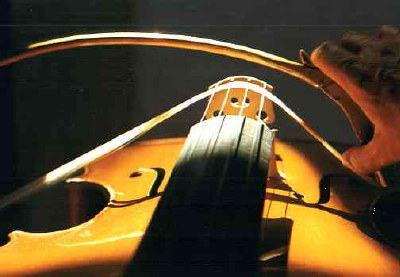
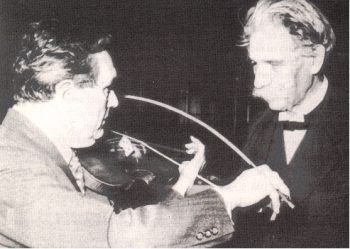
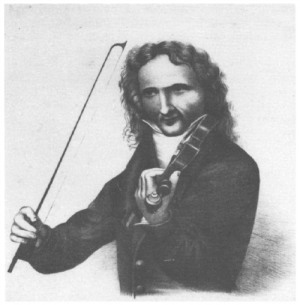
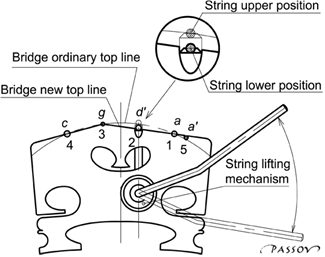
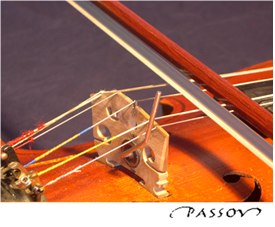
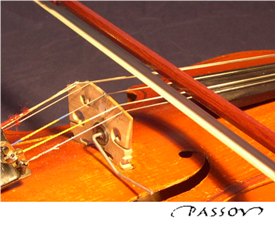
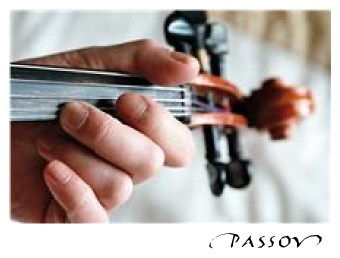

New! Comments
Have your say about what you just read! Leave me a comment in the box below.